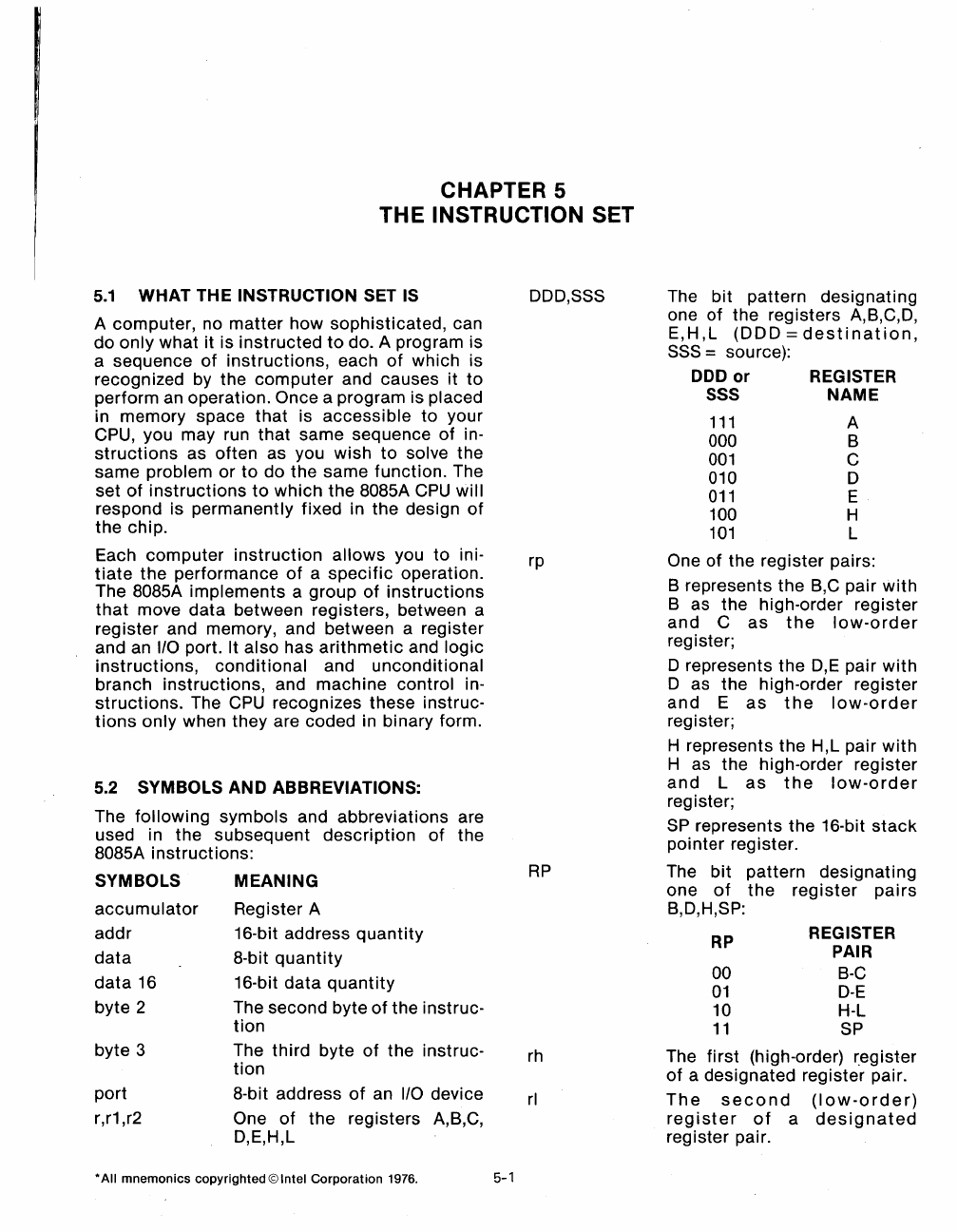
CHAPTER 5
THE
INSTRUCTION SET
5.1
WHAT THE INSTRUCTION SET IS
A computer, no
matter
how sophisticated, can
do
only what it is instructed
to
do. A program is
a sequence
of
instructions, each
of
which is
recognized by the
computer
and causes it
to
perform an operation. Once a program is placed
in memory space
that
is accessible
to
your
CPU, you may run
that
same sequence of in-
structions
as often as you wish
to
solve the
same problem
or
to
do
the same function. The
set
of
instructions
to
which
the 8085A
CPU
will
respond is permanently fixed in the design
of
the chip.
Each computer
instruction
allows
you
to
ini-
tiate
the performance
of
a
specific
operation.
The 8085A implements a group
of
instructions
that
move data between registers, between a
register and memory, and between a register
and an
110
port. It also has
arithmetic
and logic
instructions,
conditional
and unconditional
branch instructions, and machine control in-
structions.
The
CPU
recognizes these instruc-
tions
only when they are coded in binary form.
5.2 SYMBOLS AND ABBREVIATIONS:
The following symbols and abbreviations are
used in the subsequent description
of
the
8085A instructions:
SYMBOLS
accumulator
addr
data
data
16
byte 2
byte 3
port
r,r1,r2
MEANING
Register A
16-bit address
quantity
8-bit
quantity
16-bit
data
quantity
The second byte
of
the instruc-
tion
The
third
byte
of
the instruc-
tion
8-bit address
of
an
110
device
One
of
the registers A,B,C,
D,E,H,L
* All mnemonics copyrighted © Intel Corporation 1976. 5-1
DDD,SSS
rp
RP
rh
rl
The bit pattern designating
one
of
the registers A,B,C,D,
E,H,L
(DOD =
destination,
SSS
= source):
DOD
or
SSS
111
000
001
010
011
100
101
REGISTER
NAME
A
B
C
o
E
H
L
One
of
the register pairs:
B represents the B,C pair
with
B as the high-order register
and
C
as
the
low-order
register;
o represents the
D,E
pair
with
o as the high-order register
and
E
as
the
low-order
register;
H represents the H,L pair
with
H as the high-order register
and
L
as
the
low-order
register;
SP
represents the 16-bit
stack
pointer register.
The bit pattern designating
one
of
the
register
pairs
B,D,H,SP:
RP
00
01
10
11
REGISTER
PAIR
B-C
D-E
H-L
SP
The
first
(high-order)
~egister
of
a designated register pair.
The
second
(low-order)
register
of
a
designated
register pair.
